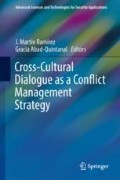Abstract
The understanding of unknowables in the risk management processes hinges on identity, requisite diversity and ontological dimension of a sense maker. A team involved in risk assessment and risk analysis must form a unit of sense makers who can deal with knowns, knowables and more so unknowables through the process of sensemaking. The paper discusses sensemaking concepts as popularised by Weick in 1995 and use this understanding to unravel unknowables during risk analysis. With the current focus on “Terrorist Conflict”, that challenges all national and international security organisations, the importance of risk assessment and risk analysis becomes critical to prevent and mitigate frequent, unannounced and devastating losses of human lives and assets of incalculable value. Some of the devastating terrorist attacks are understood retrospectively even though the cues were there but not noticed. The occasions for sensemaking are triggered by ambiguity, unexpectedness and uncertainty, which could assist in picking up cues for potential terrorist activity.
Cross-Cultural Dialogue as a Conflict Management Strategy. Edited by J. Martín Ramírez, and Gracia Abad. © 2018 Springer International. Submitted: November, 6 2017; Accepted: December, 21 2017.
Access this chapter
Tax calculation will be finalised at checkout
Purchases are for personal use only
References
Ancona, D. (2015). Sensemaking, framing and acting in the unknown. Cambridge: MIT Sloane School of Management.
Beer, S. (1959). Cybernetics and management. English University Press.
Besenyo, J. (2015a). Not the invention of ISIS Terrorists among immigrants. https://www.researchgate.netpublication282366848.
Besenyo J. (2015b). Boko Haram in context the terrorist organizations’s roots in Nigeria’s social history. https://www.researchgate.netpublication282575436.
Caris, C., & Reynolds, S. (2014). ISIS governance in Syria. Middle East Security Report 22 | ISIS Governance in Syria, July 2014.
Chow, C. C., & Sarin, R. K. (2002). Known, unknown, and unknowable uncertainties. Theory and Decision, 52, 127–138.
Cluett, J. (2011). Reviewing and preventing the risk of corrosion in a manufacturing environment. https://www.researchgate.netpublication302952686.
Cluett, J. (2012a). e Tendering for capital projects.
Cluett, J. (2012b). Network Africa a complex system. http://www.researchgate.netpublication275335219.
Diebold, F. X., Doherty, N. A., & Herring, R. J. (2010). The known, the unknown, and the unknowable in financial risk management: Measurement and theory advancing practice. In: F. X. Diebold, N. A. Doherty, & R. J. Herring (Eds.), The known, the unknown, and the unknowable in financial risk management (pp. 304–346). Princeton, NJ: Princeton University Press.
Heng, Y. K. (2003). Risk management and war.
Irwin, S. (2015). Creating a threat profile for your organization. GIAC (GCIH) Gold Certification Author: Stephen Irwin,stephen.irwin@gmail.com!, Advisor: Stephen Northcutt, Accepted: September 8, 2014.
ISOIEC 27001. (2013). Information security management—Transition guide. BSI UK Kitemark, Court Davy Avenue, Knowlhill, Milton Keynes, MK5 8PP United Kingdom.
Kolko, J. (2010). Sensemaking and framing: A theoretical reflection on perspective in design synthesis. In the 2010 Design Research Society Conference Proceedings.
Lin, P-H. (2011). Safety management and risk modelling in aviation. ISBN 978-90-79787-32-6.
Macrae, C. (2007). Interrogating the unknown: Risk analysis and sensemaking in airline safety oversight. The Centre for Analysis of Risk and Regulation. London School of Economics and Political Science.
Maitlis, S. (2014). Sensemaking in organizations: Taking stock and moving forward. The Academy of Management Annals, 8(1), 57–125.
QualiWare ApS, Ryttermarken 15, 3520 Farum, Denmark. (1991). https://www.qualiware.com/governance-risk-and-compliance/risk-management.
RM Studio Team. (2015). Cyber warfare risk management. Finding ways for future data defense.
Rumsfeld, D. H. (2002). News briefing on February 12, 2002. US Department of Defence, DoD News Briefing—Secretary Rumsfeld and Gen. Myers Presenter 11:30 AM EDT.
NSW Government. (2002). Security and legal issues. in eTendering http://www.construction-innovation.info/imagespdfsResearch_libraryResearchLibraryAProject_ReportsSecurity_and_Legal_I.
Schrader, J. Y., Lewis, L., & Brown, R. A. (2001). Defense review 2001 lessons on managing change in the department of defense.
Tsoukas, H., & Knudsen, C. (2005). Oxford handbook of organisational theory. Oxford University Press. ISBN: 9780199275250.
Turing, A. M. (1936). On computable numbers with an application to the entscheindungsproblem. Published November 1936.
US State Senate. (2016). Russian hacking and the 2016 election: What you need to know. www.cnn.com/2016/12/12/politics/russian-hack-donald-trump-2016-election.
Weick, K. E. (1995). Sensemaking in organizations. Foundations for organizational science (p. 5). A Sage Publications Series.
Weick, K. E., Sutcliffe, K. M., & Obstfeld, D. (2005). Organising and the process of sensemaking. Organizational Science, 16(4), 409–416.
WHO. (2002). Food Safety Department. World Health Organization. ISBN 92 4 154584 4.
Zeckhauser, R. J. (2003). Sacrificing civil liberties to reduce terrorism risks. Journal of Risk and Uncertainty, 26(2–3), 99–120.
Author information
Authors and Affiliations
Corresponding author
Editor information
Editors and Affiliations
Rights and permissions
Copyright information
© 2018 Springer International Publishing AG, part of Springer Nature
About this chapter
Cite this chapter
Khanyle, D., Cluett, J.D. (2018). Sensemaking and Unknowable in Risk Management. In: Ramírez, J., Abad-Quintanal, G. (eds) Cross-Cultural Dialogue as a Conflict Management Strategy. Advanced Sciences and Technologies for Security Applications. Springer, Cham. https://doi.org/10.1007/978-3-319-77231-8_8
Download citation
DOI: https://doi.org/10.1007/978-3-319-77231-8_8
Published:
Publisher Name: Springer, Cham
Print ISBN: 978-3-319-77230-1
Online ISBN: 978-3-319-77231-8
eBook Packages: Political Science and International StudiesPolitical Science and International Studies (R0)

